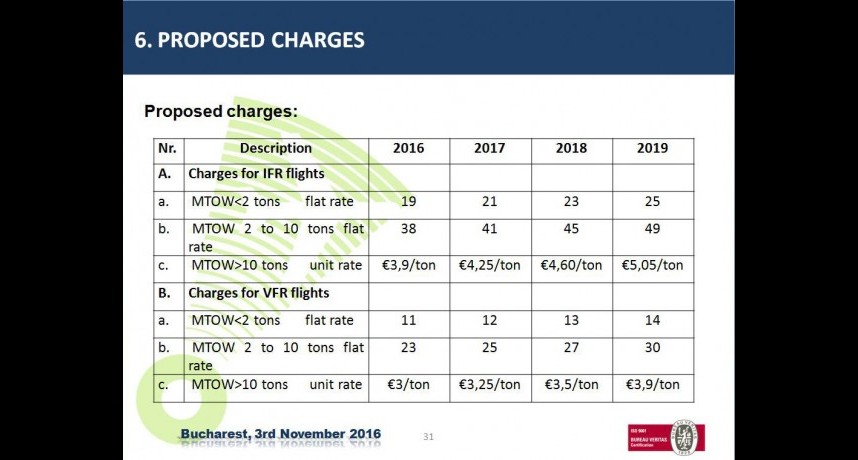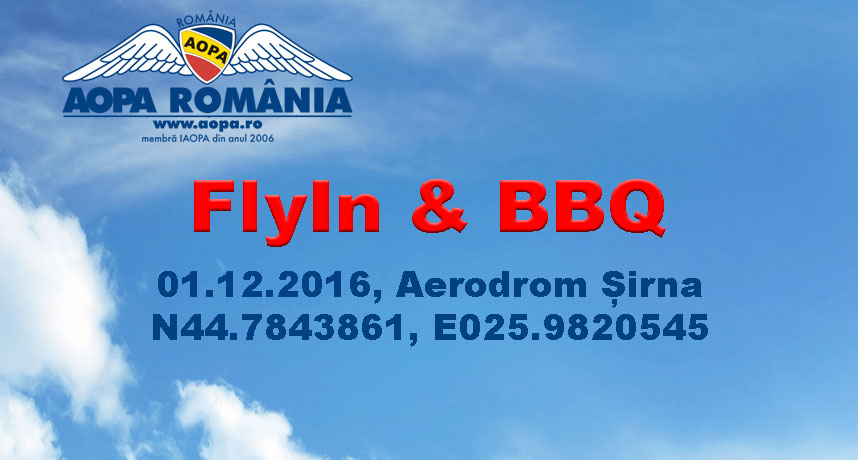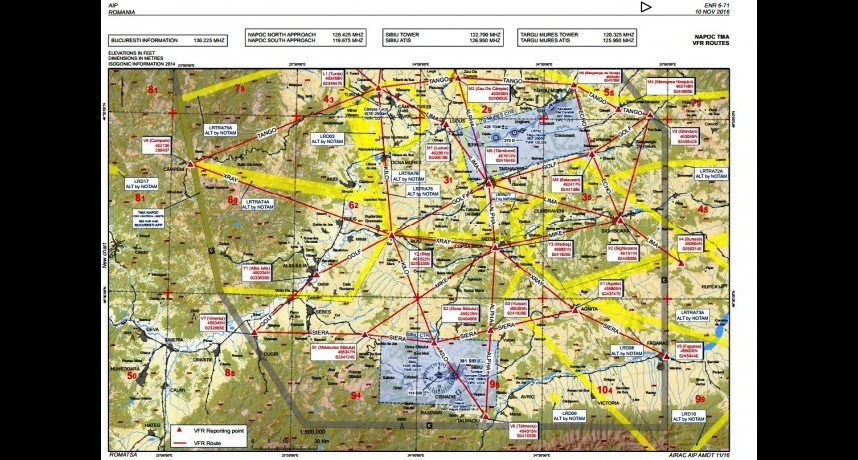Raportul final dupa a 129a Intalnire Regionala IAOPA
Raportul final dupa a 129a Intalnire Regionala IAOPA

International AOPA Europe meets in Heidelberg
International AOPA held its 129th European Regional Meeting in Germany at the weekend, with 33 delegates from 14 countries attending to hear an assortment of reports containing good and bad news for general aviation. The good news: IAOPA has fought off EASA’s damaging Dangerous Goods proposals, which would have made it illegal to carry a quart of oil or five litres of fuel in your aircraft – this no longer applies to aircraft under 2 tonnes. EASA has also abandoned the idea of flight time limitations for GA, and IAOPA has identified 30 points in the Single European Rules of the Air where national authorities may choose whether or not they enforce the regulations.
The less good news: some countries insist on interpreting EASA regulations in the most onerous and costly way, EASA is boycotting the Partnership Group it set up with the GA industry and national authorities, increased taxes are strangling flight training even before EASA’s Approved Training Organisation requirements add more cost and bureaucracy, and economic recession continues to afflict our industry. But AOPA continues to fight on behalf of members and continues to make progress on the most important issues.
Can the SSCC resolve GA’s difficulties?
IAOPA Europe and EAS have jointly identified their top priorities for a new Safety Standards Consultative Committee which aims to put right some of the problems that EASA has created for general aviation. The European Commission supports the concept of a new strategy for GA, and one of the industry’s main concerns is that there should be a ‘quick fix’ procedure in place. “GA is suffering,” AOPA Germany’s Managing Director Dr Michael Erb told the Regional Meeting. “We cannot wait three to five years for changes.”
Dr Erb, who represents IAOPA on the new committee together with Jacob Pedersen, said a prerequisite was to identify responsible managers to end buck-passing. “Trying to pursue a problem is very often like playing football against Barcelona,” he said. “The Commission says it’s the national authorities, they say it’s EASA, EASA says it’s the Commission – they play tiki-taka between Brussels, Cologne and the national capitals, and we’re just running after the ball until we’re exhausted. They have to identify to us people who are accountable.”
Secondly, we need statistics. EASA has virtually none, so it is forced to regulate in the dark. IAOPA Europe is working on an online survey of GA safety and economics to provide EASA with some of the data it should have had years ago before it wrote its first regulation. Details of the survey will follow, and we hope as many members as possible will fill it in.
Third on the priority list is the problems of Registered Training Facilities which EASA is demanding become ‘Approved Training Organisations’ with a much higher level of bureaucracy. This issue is being treated differently all over Europe, and many RFs cannot comply with the new paperwork requirements in time. Urgent changes need to be made to FCL regulation, particularly where national implementation is unhelpful and in the case of foreign licence validation. The division between complex and non-complex needs to be revisited, and the Part M regulations which have caused so much economic loss to GA must change. The definition of ‘commercial’ also needs to change, and the implementation of language proficiency requirements must be studied. The failure to enforce mandatory handling exemptions for GA is a priority, as is EASA’s proposals for occurrence reporting, which includes such things as notifying the authorities every time a stall warning sounds.
The new Safety Standards Consultative Committee could be very useful to GA, Dr Erb said. “Our expectations are high, but we have to wait and see if something real is going to happen.”
Political lobbying goes on
IAOPA Senior Vice President Martin Robinson reported that IAOPA’s Brussels political lobbyist Lutz Dommel (pictured at right) had moved on to a career with a bank, but he remains involved with AOPA Belgium. Lutz performed sterling work for IAOPA at the European Parliament, culminating in the hearing in Brussels attended by five MEPs and 85 interested GA parties. The EC’s Aviation Commissioner Matthew Baldwin made a speech but did not stay for questions, which annoyed many participants and was not lost on the MEPs; similarly Filip Cornelis, the EC’s head of aviation security, left quickly as he had more important things to do. Work was continuing to set up a Parliamentary ‘Intergroup’ dealing with general aviation, with the UK MEP Timothy Kirkhope being an important supporter.
Mr Robinson said that while the Lisbon Treaty was supposed to increase the powers of the European Parliament over the Commission, in fact there was a strong move towards ‘delegated acts’ which would give European states less room for manoeuvre in how they implemented rules. The ‘comitology’ process under which regulation was democratically reviewed would go. “Parliament can only say ‘yes’ or ‘no’ to a proposal from the Commission, and if they ignore it, within three months it becomes law anyway,” he said. “Even after Lisbon it is not possible to send something back to the Commission saying we like 95 percent of this, but the other 5 percent needs to be changed. We will see a strengthening of the EC’s powers in Europe, and member states will have less influence on the direction the EC wants to go.”
Mr Robinson recorded his thanks to Lutz Dommel for his help and support.
Dangerous goods – GA wins an exemption
All of IAOPA’s lobbying on the Dangerous Goods provisions of EASA’s rules for non-commercial, non-complex operations has borne fruit, with aircraft under two tonnes being exempted from the requirement to obtain approvals. AOPA Denmark’s Jacob Pederson, IAOPA’s lead on non-complex ops, said the nonsensical provisions which would have prevented GA aircraft from even carrying a quart of engine oil or five litres of fuel have been finessed by EASA’s decision. “The carriage of dangerous goods in aircraft below two tonnes is now left to your discretion,” Jacob said. “It’s important to do it the right way, but you no longer need an approval.”
EASA has also abandoned the idea of flight time limitations for non-commercial, non-complex operations; they have been so swamped by the reaction to their flight time limitations proposals for the commercial world that they do not intend to case the net wider. Furthermore, it is now clearly stated in the rules that an AOC may switch between commercial and non-commercial ops, a very important change which cleared up some ambiguities in the rules and makes it possible for aircraft owners to gain from their aircraft being on an AOC, while still being able to fly it non-commercially with a PPL.
Mr Pedersen said it was also important that national AOPAs should be aware that under the Standardised European Rules of the Air, SERA, there were about 30 places where detailed implementation is left to national authorities. “Talk to your CAAs and make sure they make best use of this flexibility,” he said. “For instance, under VMC requirements SERA says there is a 5k minimum unless your country decides otherwise. So there is no reason to depart from the current 1500 metre standard. Night VFR is allowed if your country decides it should be allowed. Many states think that if it’s SERA, it’s out of their hands. But this is not so. EASA has amended the regulations to give some exemptions from their own derogations, and we all need to take full advantage.”
New man in the hot seat
Mark Baker, the new President of AOPA US, sent a letter via IAOPA Secretary General Craig Spence affirming his commitment to International AOPA and looking forward to the IAOPA World Assembly in China next year. Melissa Rudinger, Vice President of Regulatory Affairs at AOPA US, said Mark had been a passionate aviator since he was 16 years old and had owned over 90 aircraft in his time; he builds, fixes, buys and sells aircraft and flies jets and helicopters, but his favourite aircraft is a Cub on floats. Having taken over at AOPA US only in September, it was too much to expect him to leave the country for a European Regional Meeting so soon, but IAOPA Europe looks forward to welcoming him in the near future.
ICAO Study Group for GA
Frank Hoffman, IAOPA’s representative at the International Civil Aviation Organisation in Montreal, reported that a GA Study Group had been set up at ICAO – a small earthquake which gives GA a much stronger voice on the international stage. The existence of the Study Group, which IAOPA had been working towards for years, means a different level of recognition for the industry, and it allows us to bring in our own experts to help bolster our own efforts and incentives. As Frank said, it didn’t sound like much, but it was a major achievement.
Stopping ‘accelerate-stop’
German aircraft operator Matthias Albrecht came to the Heidelberg meeting to record his thanks to IAOPA for its assistance in staving off EASA’s proposals on accelerate-stop distances, which would have had a crippling effect on his business. Albrecht has an IT company which operates all over Germany and elsewhere, and uses a Mooney and a Piaggio Avanti to move staff around. The smallest airfield the company uses with the Avanti is 712 metres, but EASA’s proposals would have required a minimum of 1450 metres, forcing his company to use single-engined aircraft to reach many markets. At the last moment EASA rescinded its proposal and exempted non-commercial twin turboprops from the requirements, allowing him to continue operating as he has always done.
Dr Michael Erb, Managing Director of AOPA Germany, thanked Herr Albrecht in turn for all the work he had done in lobbying local, national and European politicians to achieve a successful outcome.
Flying with diabetes – all is not lost
The Regional Meeting heard from Douglas Cairns, a member of AOPA UK who is a diabetic and who has spent much of his life fighting to be allowed to fly. He has been at the forefront of a successful campaign in the UK, where the CAA announced last year that pilots with insulin-dependent diabetes could continue to fly commercially and privately. This precedent gives hope to thousands of pilots at risk of losing their careers through diabetes, and thousands more who wish to become pilots but are currently debarred from the profession in most countries.
Cairns (pictured at right) was an RAF pilot who was grounded when he developed diabetes, and he has spent decades convincing doctors and regulators that most diabetics, if properly treated, can fly perfectly safely, professionally and otherwise. He has flown around the world, and to the North Pole, to prove his point, and medical opinion is swinging around to back him. He uses a small digital device, the size of a mobile phone, to measure blood sugar regularly, and in 12 years and 3,000 hours has never had a problem.
Apart from the USA, five countries now allow private flying for pilots with diabetes – South Africa, the UK, Canada, Australia and Israel. Until the UK allowed commercial flying, Canada was the only country where pilots were not grounded when they developed diabetes. There are now 560 pilots with diabetes flying in the USA, and 17 professional pilots with diabetes flying commercially in Canada.
Mr Cairns thanked Martin Robinson, CEO of AOPA UK, who he said was instrumental in leading him along the correct path in his lobbying efforts. The CAA has filed for a derogation with EASA to allow medicals to be issued to pilots with diabetes. EASA challenged the derogation but the UK dug in its heels and was allowed to continue. The Agency challenged the CAA’s decision a second time, but the UK has affirmed it. It is open to EASA to challenge it again but the signs are that it will not do so, partly because it is on extremely tricky ground with regard to discrimination laws. Ultimately, if authorities in other European countries refuse to follow the UK CAA’s lead, it should be open to European diabetic pilots to obtain their licences through the UK CAA and use them anywhere in the world.
Local difficulties
Apart from EASA and its pan-European problems, AOPAs from each country were asked to set out the most pressing issues facing them at home. For AOPA Denmark, Jacob Pedersen reported that all annual fees had been abolished – no more yearly fee to run a flight school, an airport, an instrument approach. Everything was now financed by a charge of €1 on every passenger on a commercial flight. On the downside, Denmark had adopted FCL in an inflexible way. For example, complex aircraft proficiency checks now had to be done on a simulator. But if you call the sim company they will sell you a week’s course, probably far away from your home base, to do something you could previously do on your own aircraft in an hour. The only advice AOPA can give is to go to another country like the UK, which has derogated from this requirement.
Dr Michael Erb of AOPA Germany said the problems of Approved Training Organisations were compounded by the fact that authority over flight training schools rests with 16 independent state governments, and what’s good for Hessen might not be good for Bavaria…
Blazej Krupa of AOPA Poland said tax increases on avgas were having a severe effect on flight training. They followed a European Court of Justice ruling that said only commercial air transport was exempt from the energy tax, whereas every country except Germany had previously said that only private pleasure flying should pay it. While holidaymakers on cheap flights benefit, he flight training industry staggers.
Daniel Affolter, President of AOPA Switzerland, said two thirds of tax revenue on avgas has to be reinvested in GA in Switzerland, but increasing costs mean people are giving up on flying. Main concerns in Switzerland are the possible closure of Dübendorf airfield near Zurich, and language proficiency requirements.
The acceptance of seaplanes in Greece is a success for AOPA Hellas; Anton Koutsoudakis reported that three companies are preparing to start operating seaplanes, while five private seaplanes, mostly ultralights on floats, had begun flying. There were positive reports from AOPAs in Austria, Luxembourg, Sweden, Norway, Romania, Finland and Iceland, where AOPA is fighting plans to turn over Reykavik airport to housing development.
For AOPA UK, Martin Robinson said British pilots face the same problems as in every other country – fuel issues and tax, change from Registered Facilities to ATOs, FCL implementation, CAA administration, handling charges and airport fees. He highlighted the commitment of the UK CAA to abolish ‘gold plating’ and urged AOPAs to ask their regulators why they could not make the same commitment. The UK pilot population continued to shrink, he said. Five years ago some 3,500 PPLs were issued, but last year this was down to 2,500, and 60 percent of pilots fail to renew their licences after five years.
Jepp’s Mobile Flitedeck VFR
Tobias Baesch and Marcus Marth from Jeppesen gave delegates a demonstration of the company’s Flitedeck VFR product for iPad, which was compiled with the assistance of AOPA members who participated in an online survey. Tobias Baesch, navigation portfolio manager, said there were many strong and agile competitors in the field, such as SkyDemon, and Jeppesen had thought long and hard about whether it should enter the market. It had ultimately decided to do so and had formed a small team of young people straight from university with all the key disciplines.
The demonstration showed a single-chart presentation which zoomed right down to airfield taxi presentation, with data appearing and disappearing as necessary. Tapping on screen produced relevant local data, while information such as notams and weather were presented in text format. IAOPA is considering linking with Jeppesen to provide discounts on certain products.
In atasament este si documentul oficial care cuprinde si interventiile delegatiei Romaniei




